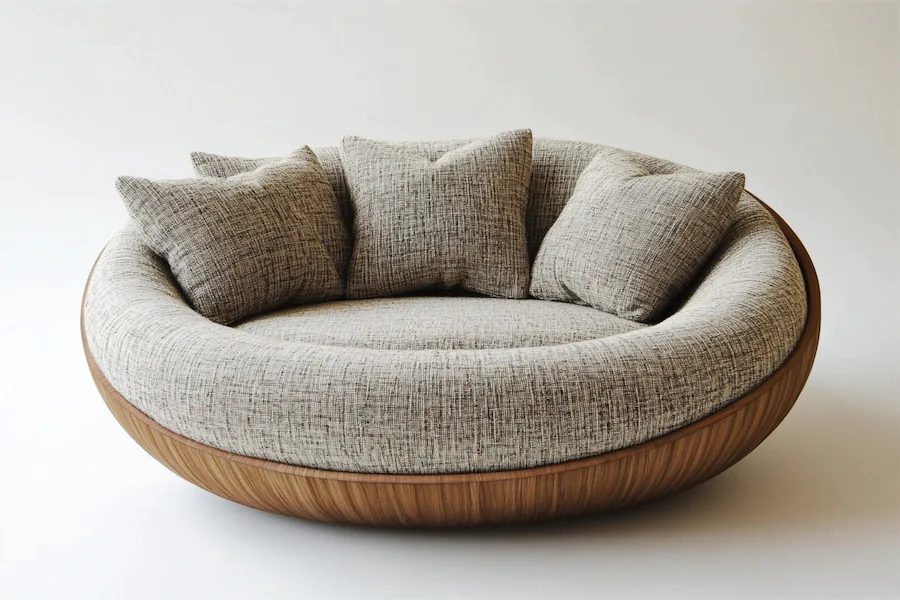Round sofas, also known as curved or circular sofas, are distinctive furniture pieces that add elegance and functionality to various interior settings. This article explores their history, key features, applications, considerations for selection, and their role in contemporary design.
History and Origins of Round Sofas
The concept of curved furniture has been present throughout design history, with notable prominence in mid-20th-century modernism. Designers like Vladimir Kagan popularized the use of organic, flowing forms in the 1950s and 1960s, creating iconic pieces that embraced curvature to enhance social interaction and aesthetic appeal. The resurgence of interest in curved designs in recent years reflects a desire to soften interior spaces and introduce a sense of fluidity and comfort.
Key Features of Round Sofas
- Design Aesthetics: Round sofas feature smooth, curved lines that create a sense of movement and harmony within a space. Their sculptural forms often serve as focal points in interior design.
- Comfort: The enveloping shape of round sofas offers a cozy seating experience, promoting relaxation and conversation.
- Materials: These sofas are available in various materials, including plush velvets, durable leathers, and contemporary performance fabrics, catering to diverse stylistic preferences.
- Configurations: Round sofas come in multiple configurations, such as semicircular, crescent, or fully circular forms, accommodating different spatial requirements and design visions.
Applications of Round Sofas
- Residential Spaces: In homes, round sofas are ideal for living rooms, lounges, or open-plan areas, facilitating intimate gatherings and enhancing the flow of movement.
- Commercial Environments: In hospitality settings like hotel lobbies, upscale restaurants, or corporate lounges, round sofas contribute to a welcoming and sophisticated atmosphere.
- Public Areas: They are also suitable for public spaces such as galleries or reception areas, where their unique shapes can complement architectural features and encourage social interaction.
Considerations When Choosing a Round Sofa
- Space Planning: Assess the room’s dimensions and layout to ensure the round sofa fits appropriately, allowing for adequate circulation and balance with other furnishings.
- Style Compatibility: Select a design that harmonizes with the existing décor, whether it be modern, traditional, or eclectic.
- Functionality: Consider the sofa’s intended use—whether for formal seating, casual lounging, or as a statement piece—to determine the appropriate size and configuration.
- Material Durability: Choose upholstery materials that align with the anticipated level of use and maintenance, ensuring longevity and ease of care.
Conclusion
Round sofas blend form and function, offering a unique approach to seating that enhances both aesthetics and comfort. Their historical roots and modern adaptations make them versatile choices for various environments. When selecting a round sofa, thoughtful consideration of space, style, functionality, and materials will ensure it complements and elevates the intended setting.
